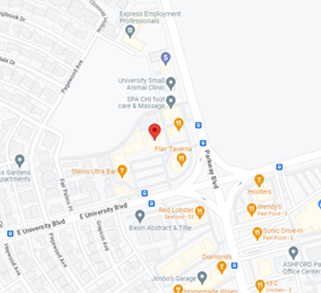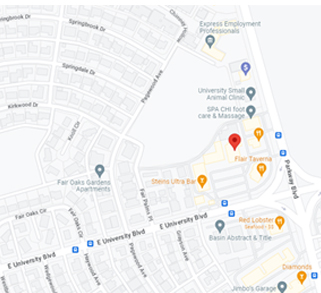When it comes to your hearing health, understanding the potential costs involved is one of the first—and smartest—steps you can take. Many people delay getting their hearing checked simply because they assume it will be too expensive. But the truth is, knowing the average cost of a hearing test in Waco, TX—and what you might invest in hearing aids—can help you plan ahead and avoid financial surprises.
Whether you’re researching for yourself or a loved one, learning about these cost factors can make a big difference in choosing the right care and ensuring a positive outcome.
What Affects the Cost of a Hearing Test or Hearing Aids?
Several factors impact the cost of hearing care, from the style and technology level of the hearing aids to the provider you choose and the services included. Here’s a breakdown of what influences pricing:
1. Hearing Aid Style
Hearing aids aren’t one-size-fits-all. Different models cater to different needs—and price points:
- Behind-the-Ear (BTE): Larger but often more affordable and powerful.
- Receiver-in-Canal (RIC): More discreet and popular for mild to moderate hearing loss.
- In-the-Ear (ITE): Custom-molded and slightly more expensive.
- Completely-in-Canal (CIC): Nearly invisible, but higher in price due to their small size and precision fit.
The more compact and personalized the device, the higher the cost typically runs.
2. Technology Level
You’ll find hearing aids offered at various levels of technology, from basic to premium:
- Entry-level models offer simple amplification and manual controls.
- Mid-range devices add directional microphones and better noise control.
- Advanced hearing aids include features like automatic noise reduction, rechargeability, and feedback suppression.
- Premium models offer Bluetooth connectivity, AI-enhanced processing, and app-based control.
With each upgrade, you’re not just paying for better sound—you’re getting improved convenience, adaptability, and support in more complex listening environments.
3. Brand Matters
Premium brands like Phonak, Oticon, Starkey, and Widex are known for their reliability, innovation, and strong warranties. While these options may come at a higher cost, you’ll benefit from excellent long-term performance and dedicated customer support.
4. Professional Fitting Services
A hearing aid is only as good as its fit. That’s why professional hearing services—like real-ear measurements, device programming, and ongoing adjustments—are crucial. Some clinics include these services in the overall price, while others charge separately, so it’s important to ask for a detailed quote.
5. Warranty & Service Plans
Many clinics offer extended warranties that include annual hearing exams, routine maintenance, and repairs. While these may raise the upfront cost, they can save you money and stress in the long run.
Hearing Aid Technology Tiers & What You Get
Here’s a simplified breakdown of the technology tiers and their average costs (per pair):
| Technology Tier | Cost Range | What’s Included |
| Basic | $1,000 – $2,000 | Basic amplification with manual volume controls |
| Mid-Range | $2,000 – $3,500 | Directional microphones, feedback management |
| Advanced | $3,500 – $4,500 | Rechargeable batteries, adaptive noise reduction |
| Premium | $4,500 – $6,500 | Bluetooth, AI sound processing, mobile app integration |
If you’re someone who’s frequently in social settings, uses smartphones regularly, or struggles with background noise, the added investment in advanced or premium technology is often worth it.
Insurance Coverage & Financing Options
Paying for hearing care out-of-pocket can be daunting, but there are more support options than you might think.
Medicare & Medicare Advantage
Traditional Medicare typically doesn’t cover routine hearing tests or hearing aids. However, many Medicare Advantage (Part C) plans include some level of hearing care coverage, which may include:
- Annual hearing exams
- Partial payment toward hearing aids
- Preferred pricing with network providers
Be sure to check your plan details or speak with your benefits coordinator to know what’s included.
Private Insurance
Private health insurance varies widely, but some plans offer benefits for hearing care:
- Blue Cross Blue Shield of Texas may offer an allowance of $500 to $2,000 per ear.
- UnitedHealthcare and Cigna often provide discounted rates at partner clinics.
Always confirm with your provider to understand your benefits and reimbursement options.
Financing Programs
Many hearing clinics partner with financing services like CareCredit, offering:
- Payment plans spread over 6 to 24 months
- Interest-free options during promotional periods
- Low monthly payments to ease the upfront burden
These financing plans can make hearing care more accessible without sacrificing quality.
Finding Affordable Hearing Care in Waco, TX
Just because a clinic is “in-network” doesn’t mean you’re getting the best deal. In fact, many patients still pay up to $5,000 out-of-pocket—even with insurance.
At Roger Clark Hearing with a Heart, the focus is on affordable, compassionate care without cutting corners. Most patients pay around $3,500 for a full set of high-quality hearing aids—even before discounts or insurance are applied.
Here’s what sets them apart:
- Free initial consultations to determine your needs without any pressure.
- Flexible payment plans that fit your budget.
- In-house discounts for seniors, veterans, and uninsured patients.
- Seasonal promotions and hearing events with free trials.
This patient-first approach helps Waco residents get the hearing support they need, without being overwhelmed by cost or confusing fine print.
Final Thoughts: Don’t Let Cost Delay Your Hearing Care
Hearing loss affects your ability to connect with others, stay safe, and enjoy daily life—but you don’t have to let cost stand in the way of treatment. With a clear understanding of your options and the right clinic on your side, better hearing is both affordable and accessible.
While some clinics hide costs behind flashy brands or confusing service bundles, Roger Clark Hearing with a Heart offers complete transparency, superior care, and the kind of support that turns first-time visitors into lifelong patients.
Ready to hear better—for less?
Schedule your Free Hearing Test today at Roger Clark Hearing with a Heart and discover how affordable better hearing can be. Don’t wait—your hearing, and your quality of life, are worth it.





